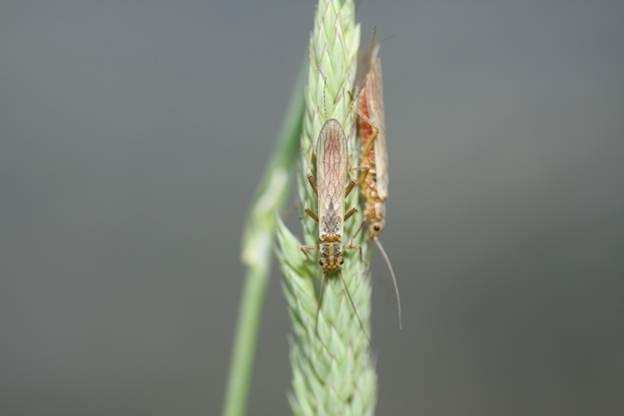BOB KRUMM NEWSLETTER
Dear angling friend:
It's been a long time since I composed a newsletter and I do apologize for the lapse but I had to complete a revision of the Rocky Mountain Berry Book.
Let me cover the history aspects first. In 2011 we saw astounding snow pack levels, torrential rains, and mind-boggling floods. Ft. Smith was cut off from the outside world for a couple of days due to the flooding of Rotten Grass Creek and Lodge Grass Creek and the Little Big Horn. The flows in the Bighorn River reached 15,500 cfs during July.
Amazingly, the fishing was fantastic. Due to the water warming up above 55 degrees by late June, there was a prolific hatch of yellow Sallies. Not only were the Sallies out and about so were the pale morning duns. I would unhesitatingly state that the hatches were the best in over a decade.
What made the hatches even more fun was where we were able to fish them: in formerly dry side channels and on top of flooded islands. The challenges of casting to a rising trout under a Russian olive tree were daunting but the rewards were sweet.

Yellow Sallies
About the time the Sallies and PMDs started hatching grasshoppers started appearing. The high grasshopper numbers astounded me for all science states that a cold, wet spring causes the grasshoppers to get a fungus and die. That clearly didn't happen around Ft. Smith.
It didn't take long for the trout to wise up to angler efforts, however. The trout developed a nasty habit of rising to the artificial, opening their mouths, and taking the offering, but somehow avoiding getting hooked—a very frustrating thing for me to witness.
While the black caddis hatch was okay, it didn't approach the magnitude of the Trico hatch and spinner fall. The spinner falls reminded me of scenes from the mid-1990s when it seemed like every square inch of water had a spinner on it. Needless to say, we had some wonderful dry fly fishing throughout September.
I might point out that Tricos, Sallies, and PMDs are temperature dependent; if a certain minimum temperature isn't reached, the insect isn't able to mature and dies. During the low water years of 2000 through 2007 the water temperature didn't reach 55 degrees in July and often didn't reach that temperature until late August or early September. Sallies need a 55 degree water temperature in July and Tricos need 63 degrees in September. Consequently, the Sallies, Tricos, and PMDs hung on in the lower stretches of the 'Horn' from Mallards to below Two Leggins. When the high flows came in 2008, 2009, and 2010 the water warmed. It took a couple of years for the insects to repopulate the upper stretches of the river. In 2010 the dry fly fishing was pretty darned good but didn't compare to 2011.
Some positive changes came with the flood waters: silt deposits were washed away, islands were lost, islands were formed, and cottonwood seedlings sprouted on the bare silt deposits. Some of the islands have dense stands of cottonwood seedlings which gives me hope that the islands will be repopulated with saplings and young trees in the next ten years.
A cooperative effort spearheaded by Dennis Fischer resulted in Klein's Channel being opened up. Opening the channel will add some more side channel for young trout to thrive and allow anglers to spread out a bit more.
It looks like 2012 will not have high flows at all. As of today, the snow pack in the Wind River drainage is 73 percent of average; the Bighorn Basin has 91 percent; and the Shoshone River has 91 percent. As of today, the flow is 2850 cfs; if I were to guess at the high flow for this year, I would say no more than 4,500 and, most likely, 3,500. I don't know if the water will warm up enough for the yellow Sallies and PMDs. I doubt we'll see many Tricos but a lot can happen between now and September.
Suffice it to say there will be good midge and blue-winged olive fishing into mid-June. Black caddis will kick in mid to late July. PMDs, yellow Sallies, and Tricos will be prevalent in the Mallards to Two Leggins stretch.
If you haven't made plans to fish the Bighorn this year, give me a holler; I'd sure like to guide you. I intend to keep my rates at last year's level: $325.00 for a single angler; $400.00 for two anglers; and $525.00 for three anglers. As per usual, I supply the flies and all terminal tackle as well as lunch. (I have been told that my lunches are some of the best on the river).
I am still happily married and enjoy fishing with my wife, Carol. Our grandchildren are growing in years and intelligence. I could regale you with photos and stories but then you would probably counter with your kid/grandkid photos and stories!
Carol and I have a new dog, Trouble. Trouble was born September 23, 2011 to our bitch, Peppy. Trouble is busy living up to his name. If I can train him, he might turn out to be the best dog I have ever owned.
Well, I had better close. Do take care and stay well. Do come and fish with me.
Warm regards,
Bob Krumm
Sheridan, Wyoming
rkrumm@fiberpipe.net
www.bluequillflycompany.com
| Editor's Note |
|---|
| Editor's Note: Bob Krumm is a long time sponsor of FAOL and an old personal friend of the Ladyfisher. |
